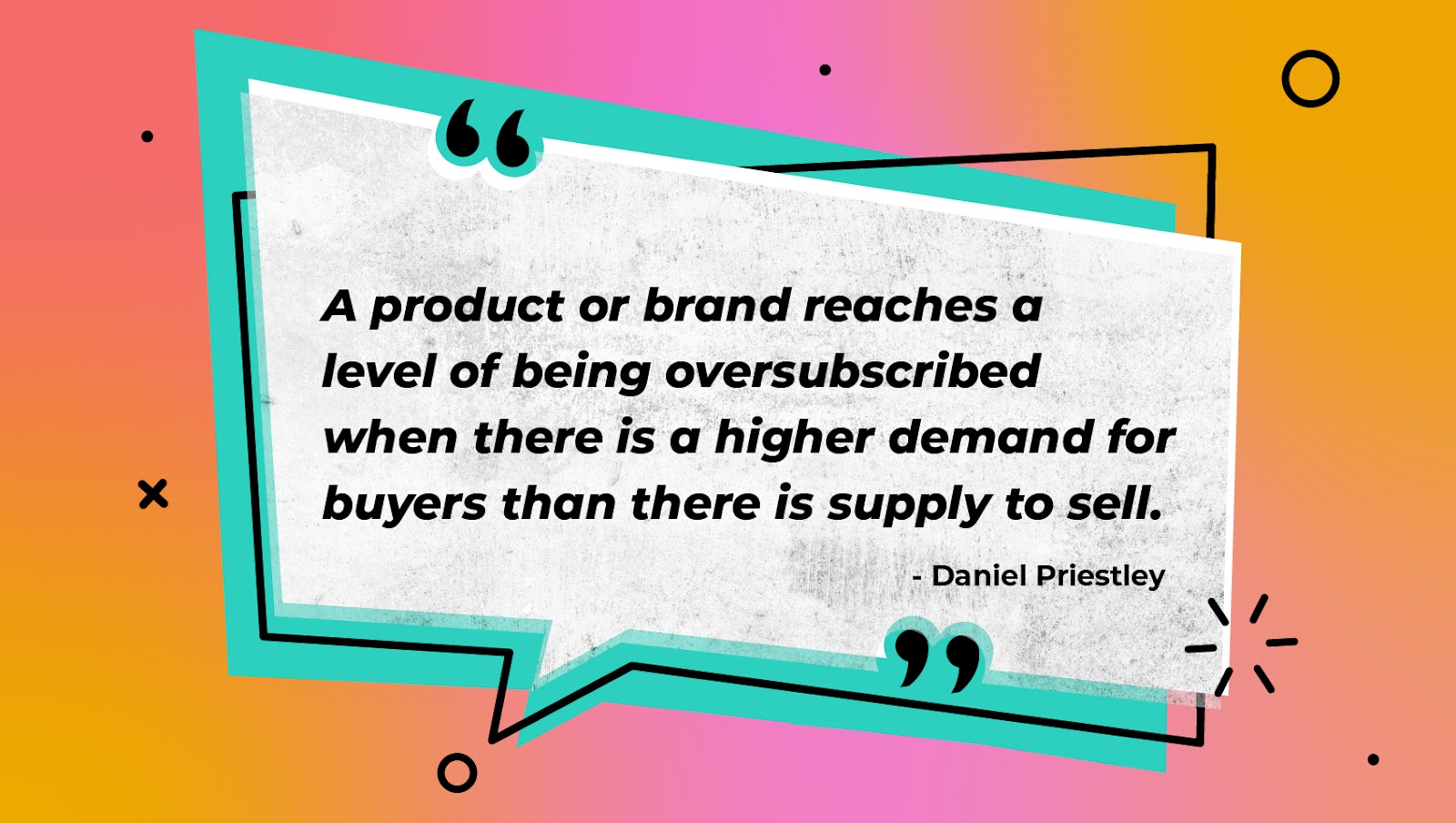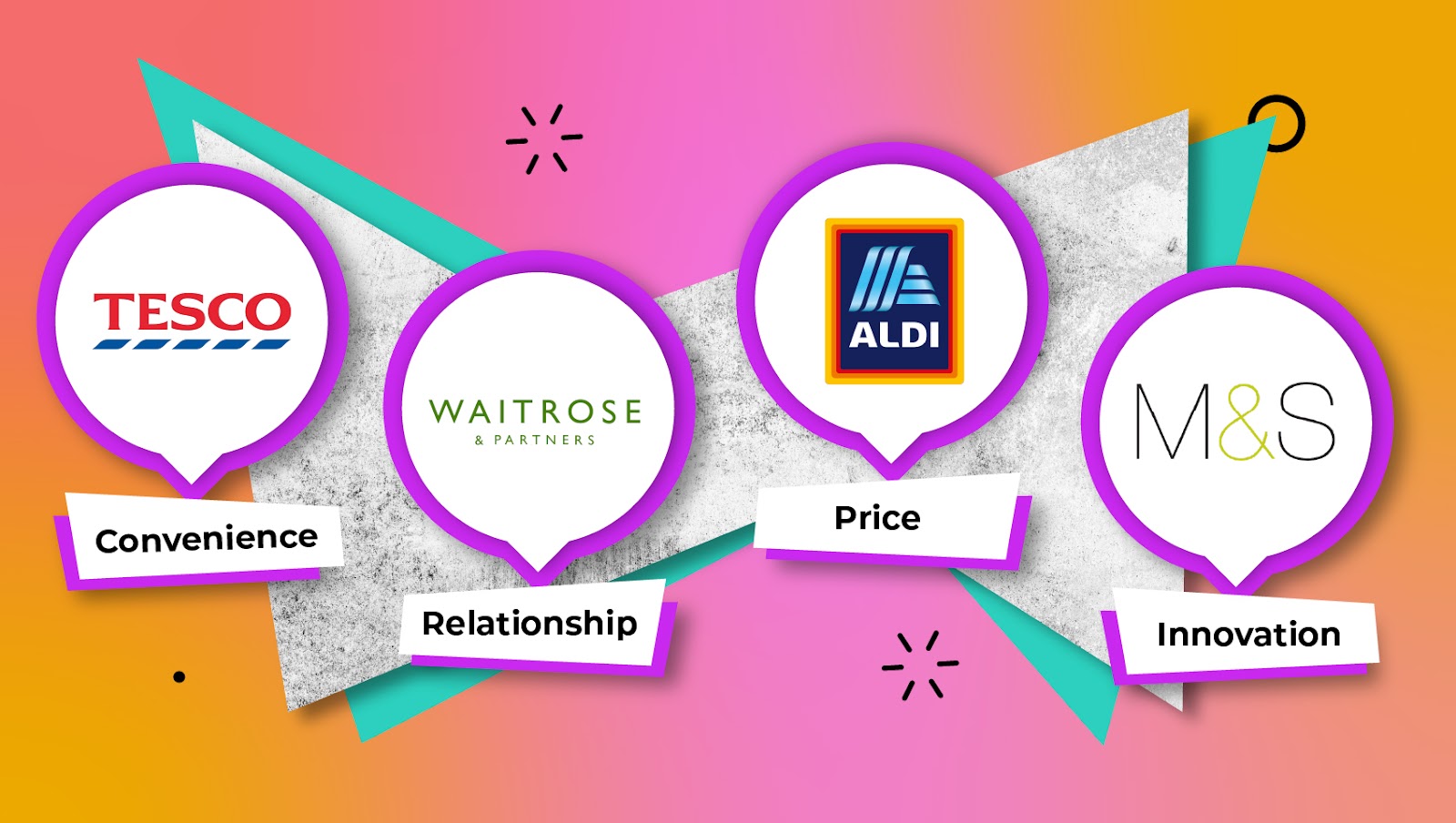
In a herd of horses, you want to be a zebra, and it’s a marketer’s job to show off their business’ stripes. But when everyone is trotting along the same path, churning out content that is indistinguishable from one another, your stripes get overshadowed by the bigger, older, and wider known horses. Sound familiar? This is an incredibly common problem for B2B marketers. So, how do you break free?
Daniel Priestley, entrepreneur and international speaker, suggests that what sets apart the successful from the standard is focusing efforts on ‘how to get people to line up to do business with you’. The successful focus on exclusivity, by being memorable and therefore desirable. They stop trying to follow the herd, who show off their services to whomever they pass. Instead, they focus on their stripes and let their defining features draw the clients in. And, soon enough, they become oversubscribed.

This book teaches you how to change your strategy to attract the clients you want to work with. You’ll learn why it's important to have a personal brand that will set you apart from notorious competitors. And, how to develop content that is relevant for every stage of the buyers' journey. If you really want to learn how to make your marketing life easier, you should read this book. But, for your ease, I have broken down and summarised the key points Priestley makes and provided the corresponding chapter titles if you wish to learn more.
Building Your Strategy
To build the right foundations you need to define your core driver. Which, if you become the best at it, will set your business apart from the rest. Priestley refers to this as a ‘Market Imbalance’. This is achieved when your business is an industry leader in either; innovation, relationships, convenience, or price. Most industries will have four main businesses that each dominate in one of these areas.

Think supermarkets: Aldi dominates on price, whilst Waitrose focuses on a great customer experience and building relationships. Tesco is convenient with the most access to their stores across the country, and M&S predominantly stocks their own brand, choosing to innovate with new products. It is crucial to decide which of the four you want to be a business leader in, and use this driver within your marketing. Chapter: Principle 3 goes into greater detail about how to decide which factor you should focus your efforts on.
If you want people to love your product/service, you need to do your client research. The key to delighting your clientele is to solve their highest value problems in a ‘remarkable’ way. Spend time researching and understanding your ideal customers’ day to day struggles. This in turn will help you communicate how your product/service is the best solution. If you come across an issue they face that they are currently unaware of, you have struck gold. Phase 1 discusses how you can gain insight into what currently drives your clients purchasing decisions.
In Principle 4 Priestley discusses why marketers appearing desperate to sell, will only continue to drive customers away. No matter how crowded your industry is, have your standards on who you want to work with, and who isn’t a right fit for you. By setting boundaries at the start and defining the target specific groups to which your services are relevant, you will attract the right clientele that your business wants to work with. Targeted ABM programmes are a great way to achieve this, focusing on a select few accounts, instead of the masses.
Becoming a Memorable Brand
Once the foundations are established, you need to build up your brand. It is far better to become famous to 5000 genuine, right fit accounts than to have overnight success for the masses and be forgotten in a heartbeat. Priestley suggests aiming to have 5000-10,000 genuine, loyal fans of your company. There are 5 key ingredients your marketing strategy needs to become famous to the 5000 which are discussed in chapter: Principle 2.
Priestley uses the term ‘remarkable’ a lot throughout his book, remarkable meaning “worthy of being talked about”. Clients positively talking about your business is the best bit of marketing you can get. And how do you get clients to talk positively about you? By leaving them feeling unexpectedly overjoyed. Whilst it isn’t technically a marketer's duty to delight clients, it is worth having the entire company aligned that happy customers = great marketing. And, marketers can get involved by making sure every single touchpoint that prospects come across, from website to sales pitches, is delivered remarkably. Learn more about how to implement remarkable delivery in the chapter: Phase 4.

Part of being memorable is being relatable. In Priestley's words, ‘companies can no longer survive as faceless corporations hiding behind a set of logos, colours, symbols and sounds.’ Instead, you should focus on building a personal brand. Stories are a driving force behind personal brands, whether that be the story behind your company name, the story of your client's success, or the story of an employee who works at the business. By sharing these stories, you are building an authentic brand voice that gains your audience's trust. Personal branding offers smaller businesses a way to compete with larger competitors who have years of product awareness, just by being more relatable. To learn about personal branding, read Principle 7, and The CDE team (Key Person Of Influence), for more information on the importance of storytelling, read Phase 5.
Creating Relevant Content
Priestley talks about having an ecosystem of content in Principle 6. It is a spectrum of products your business offers to meet the needs across every stage of the buyer journey. Stage 1 & 2 is what Priestley titles ‘products for prospects’, which consists of thought leadership and information that you give away freely or cheaply. With an abundance of disposable content at our fingertips, Priestley makes it clear that unless you are offering incredibly high-value insights, that are not freely available on the market, you should not be charging prospects money for this content. Instead, you give the ideas for free but charge for the implementation of that work from stage 3 onwards.
Of course, you want every client to be at stage 5, where your business completely solves the client's issue. But, having lower price point services, and offering to help supervise or work together on projects, provides a low risky ‘first step’ for prospects. As B2B services tend to be higher cost and investment, marketing your Stage 3 & 4 services as trials for your product will help shorten the buying cycle. This gives you time to build trust with your new clients, and if you delight their expectations, they will commit to stage 5.
Priestley takes a deeper dive into ‘products for prospects’ with the 7-hour rule. The belief is humans need 7 hours of content, ideas, conversations and connections to build enough of an emotional connection and trust in your brand to sign a deal. Therefore, marketers should provide the sales teams with 7 hours' worth of content to use to drive prospects over the line, before attempting to close them. These 7 hours should focus on entertaining and educating prospects using the 80:20 rule: 80% education with 20% entertainment. There is more detail and ideas on how you can educate and entertain your clients in Phase 2.
Finally, Priestley states that to become oversubscribed you need to run campaigns filled with events and promotions to encourage prospects to come to you all at once. This process is The Campaign Driven Enterprise Method. The entire final section of the book titled The CDE Team gives a step by step guide to building a successful campaign, including the key team that must be involved and what they require to ensure success. But, as a marketer, the base assets you will need to fulfil your role in a successful campaign is: approved copy and images to turn into compelling materials, approved content such as case studies and reports to repurpose into different ways and help drive leads, a lead capturing system to store data on who is responsive to the marketing materials, and measurement benchmarks to know a set allowable cost per lead, cost per sale and budget, with the flexibility to test ideas without going rogue with overactivity.




